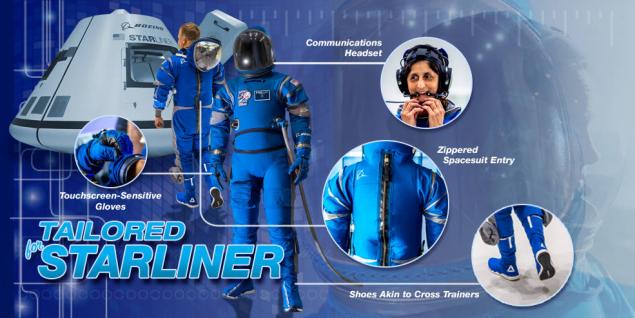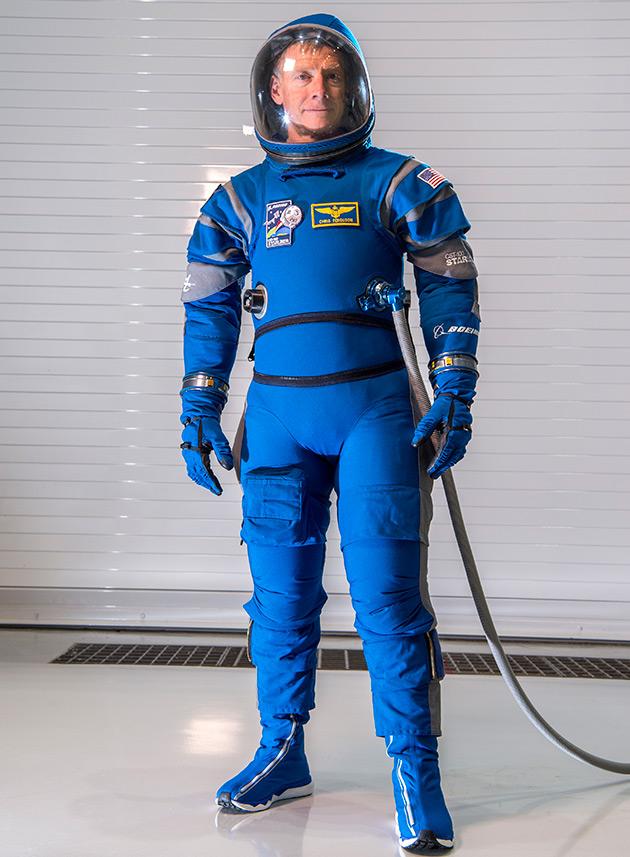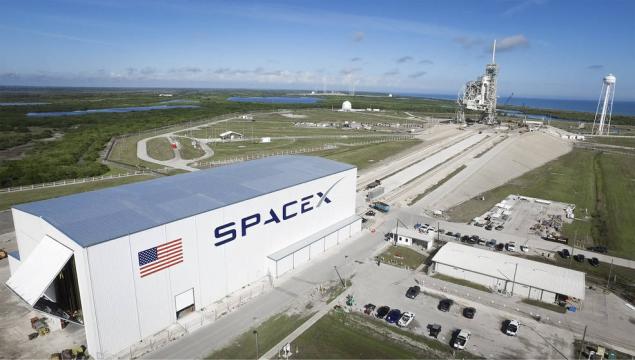Boeing presented the suit for the command of a spaceship Cockpit
 Bashny.Net
Bashny.Net

Boeing showed images of spacesuits designed for astronauts space ship Cockpit. The new suit was named the "Boeing Blue". Representatives of the American company claim that it is more flexible than other suits of this type, and is 40% lighter than other models. In addition, stated that the suit will be able to keep necessary for human pressure and other parameters in case of depressurization of the ship.
Among its features are named human readable form, the ability to sit and stand, lightweight and mittens that are suitable for use with touch screen electronic devices of any type. Helmet provides wide viewing angle, allowing peripheral vision of the user is also involved. The developer of the suit — David Clark.

The company introduced new suits on Facebook Live. A partner of this event made the newspaper Washinton Post. The presentation was held at the space center named after John Fitzgerald Kennedy (born. John F. Kennedy Space Center).
Suits is good, but the exact date of sending astronauts into space on a spaceship from Boeing is not specified. This year's planned test flights of the new American manned spacecraft. We are talking about the Boeing CST-100 and SpaceX Dragon Cockpit 2. These flights will be unmanned, and a manned mission will be implemented (if all goes according to plan) in 2018. Boeing previously announced plans to send the first test flight of manned spacecraft, in August 2018. On the ISS, the expedition you plan to submit in December of the same year.

The space centre Kennedy in Florida, USA
Space launches will be carried out under the contract with NASA for the delivery of goods and people to the ISS. Under this agreement, (or rather, two contracts with SpaceX and Boeing) NASA guarantees a minimum order of four manned flights to the ISS. Who goes first — Boeing or SpaceX, is still unknown.
The treaties themselves were signed several years before the implementation starts. This is done to ensure that the contractor companies had the ability to create boosters with a check for their functionality.
Under the terms of the contract with NASA, the cabin of the Boeing CST-100 Cockpit must accommodate a crew of at least four people. Also in the cockpit, according to the requirements, NASA needs to be able to accommodate 100 kg of payload. The device must be able to remain docked to the station for 210 days, in order to ensure the delivery of astronauts and cosmonauts to the Ground, and, if necessary, to perform emergency evacuation team. NASA believes that the new spaceships Boeing and SpaceX will increase the station crew up to seven people. Due to this increase and the amount of time that you can devote to scientific research.
Fairing of the spacecraft, Boeing will provide the air flow around the capsule with crew and cargo by air, after exiting the atmosphere, the fairing separates from the rocket. On the back of the fairing is a docking station for docking with the ISS or other orbital stations which can appear in the future. The ship is driven by three steam engines. Two located on the sides for maneuvering, two main engines and two additional. Each capsule is equipped with two portholes: one in front and one on the side. If the fuel in the system, separating the capsule and booster will not be used, it then can be spent in orbit. The capsule is planned to be used up to 10 times.
Spacecraft from Boeing consists of two modules. First — instrument-aggregatory compartment. The second lander. The same ship, except for the ISS to deliver astronauts to the orbital complex Bigelow. CST-100 is designed for making relatively short journeys. "100" in the name of the ship is 100 km or 62 miles of the Line of the Pocket.
№ Name of mission date (UTC) the Crew Logo launch dock
ISS time
docked
the state with the ISS, landing on MKS with MKS/ Scheduled 1 Boe-OFT
(Orbital Flight Test) June 2018 — First test flight of the CST-100 Cockpit to the ISS (without crew); the planned joining, the 30-day mission, undocking and landing using parachutes. 2 Boe-CFT
(Crew Flight Test) August 2018 2 of 2 the Second test flight of the CST-100 Cockpit to the ISS (with the crew); it is planned to dock, a 14-day mission, undocking and landing using parachutes.
Source: geektimes.ru/post/285160/
Tags
See also
This week, Google may present operating system for "Internet of Things"
Collected Comp fully with their hands
The Japanese built the underwater city of 5 thousand inhabitants for $ 26 billion
The most interesting plant in the world running on wind energy
Masking fabric to suit the invisible
Natalia Zakharova in a photo shoot for the magazine «Elle»
Son of ex-mayor decorated elevator
Apple Iphone 4 is official
Interesting facts about the movie studio Marvel
From to beret caps

















